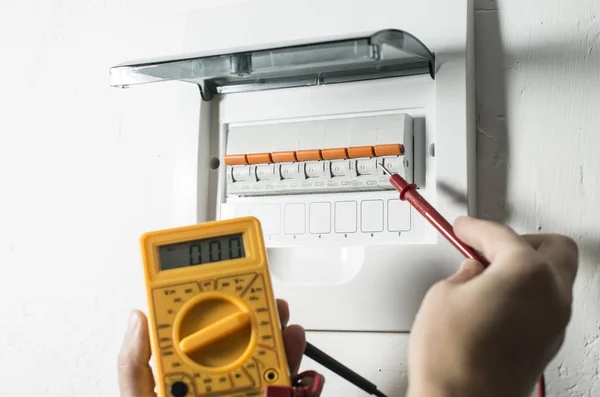Why Is It Important to Protect the Electrical Network?
From household appliances to industrial machinery — everything runs on electricity. However, even the highest-quality electrical networks are not immune to overloads or short circuits. To protect systems from such risks, special protective devices are used. One of the simplest yet most effective solutions is the fuse.
What Is a Fuse?
A fuse is an electrotechnical device designed to automatically break an electric circuit when the current exceeds a permitted level. In other words, when an overload or short circuit occurs, the fuse reacts instantly and cuts off the power supply — protecting wiring, equipment, and human life.
How Does a Fuse Work?
A typical fuse contains a fusible element that melts when current exceeds the rated value. As long as the current is within safe limits, the fuse remains part of the circuit. When the current becomes dangerously high, the element melts, breaking the circuit.
Key Characteristics of Fuses
To choose the right type of fuse, consider the following characteristics:
-
Rated current (In) — the maximum current the fuse can carry continuously without tripping. For example, a 10 A fuse should not allow more than 10 amps to pass, or it will melt.
-
Rated voltage (Un) — the maximum voltage the fuse is designed for (e.g., 250 V, 500 V, or 1000 V).
-
Operating type — how fast the fuse reacts:
-
Fast-blow (F, FF) — used for electronics and sensitive equipment.
-
Slow-blow (T, TT) — suitable for circuits with inrush currents (motors, transformers).
-
-
Time-current characteristic — a curve showing how fast the fuse blows based on current overload. This is critical for precise protection.
Using Fuses to Protect Electrical Circuits
Fuses protect circuits by matching their rated current and response characteristics to the load. An oversized fuse may not trip in time, while an underrated one may blow unnecessarily.
Example: A motor circuit with a startup current three times higher than its running current needs a slow-blow fuse. Otherwise, the fuse may trip on every start.
Fuses Are a Must-Have for Electrical Safety
Every circuit subject to overload must have fuse protection. Fuses provide:
-
Household equipment safety — refrigerators, washing machines, water heaters.
-
Industrial system protection — motors, transformers, automation systems.
-
Automotive electrical reliability — each system (lighting, battery, multimedia) has its own fuse.
-
Power supply security in IT — server racks, UPS, telecom equipment.
Types of Fuses
The most common type is the cartridge fuse, with a body made of glass, ceramic, or plastic and a metal wire inside.
Common Variants:
-
Ceramic — withstand high temperatures, used in industrial applications.
-
Glass — allow visual inspection (easy to see if the wire is broken).
-
Cartridge — threaded or plug-in types for easy installation.
-
Low-voltage cylindrical — popular in household appliances and electronics.
-
Blade-type (knife) — high-current fuses with blade-shaped contacts.
Size and Rating Guide
Fuse type and size should match the circuit’s rated current:
-
Blade fuses:
-
Type 00C, 000: 2–160 A
-
Type 00: 2–800 A
-
Type 1: 25–400 A
-
Type 2: 35–630 A
-
Type 3: 100–800 A
-
Type 4: 630–1250 A
-
-
Cylindrical fuses for low power: formats 10×38, 10×85, 14×51, etc. The first number is the diameter (mm), the second — the length.
How to Read Fuse Markings
Fuses are labeled with:
-
Rated current (e.g., 5A, 10A)
-
Rated voltage (e.g., 250V)
-
Blow type (F – fast, T – time delay)
-
Manufacturer and certification (VDE, CE, UL)
These markings help ensure the correct replacement and maintenance of fuses.
Environmental Considerations
When choosing a fuse, consider the operating environment:
-
High temperatures reduce the trip threshold.
-
Moist or dusty environments require sealed models (e.g., IP65).
-
Vibration-heavy settings (e.g., factories) require reinforced bodies.
Installation and Maintenance
During installation:
-
Use proper fuse holders. Single- or double-pole holders are used for single-phase networks (double-pole also protects neutral). Three- or four-pole holders are used in three-phase systems depending on neutral protection needs.
-
Always turn off the power before replacing a fuse.
-
Never bypass a fuse with a wire — it’s a serious fire hazard.
-
In industrial facilities, fuse inserts should be inspected regularly per national electrical regulations.
Common Mistakes When Using Fuses
Inexperienced users often make the same errors:
-
Replacing with a higher-rated fuse — dangerous, may not blow in time.
-
Bypassing the fuse — strictly forbidden, can cause fires.
-
Using uncertified fuses — low-cost fuses from unknown sources may lack certifications and pose serious risks.
-
Improper installation — loose contact in the holder may cause heating or fire.
Conclusion
Fuses are simple but critically important components in any electrical system. They protect against overloads and short circuits, extend equipment life, and prevent accidents. There are different types for homes, industry, vehicles, and electronics — and each plays a vital role.
To ensure the stability and safety of your network, choose high-quality fuses with the right specs, certified by reliable standards, and installed professionally.
Looking to buy reliable fuses for home or industrial use? Explore the UEC catalog — where only trusted, certified fuse solutions from reputable manufacturers are available.



